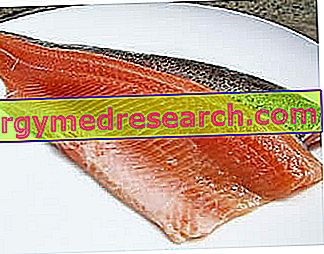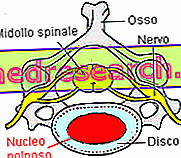Calf circumference and cardiovascular risk
The circumference of the calf is an anthropometric measure used, similarly to the circumference of the arm, to evaluate the muscle mass of the subject. In some studies it has also been used to assess the health status of the subjects examined; for example, in Spain, a study conducted on 22, 000 people over the age of 65 found a significant correlation between reduced calf circumference and high risk of malnutrition; in France, a study conducted on 6, 265 people, always over the age of 65, found an inverse correlation between calf circumference and carotid plaques. In practice, as the calf circumference increases, the risk of developing atherosclerosis and its complications would decrease, especially if this characteristic is associated with a reduced waist circumference (WHR, high waist hip ratio); conversely, subjects with high WHR and small calf are more exposed to atherosclerotic diseases (this suggests the importance of evaluating not only the fat mass and its distribution as a negative factor on the general health of the individual, but also the muscle mass as a factor positive).
BIBLIOGRAPHY
- Cuervo M, Ansorena D, García A, González Martínez MA, Astiasarán I, Martínez JA (2009). "[Assessment of calf circumference as an indicator of risk for hypotension in the elderly]" (in Spanish; Castilian). Nutrición Hospitalaria: Oficial Organ De La Sociedad Española De Nutrición Parenteral Y Enteral 24 (1): 63 - 7.
- Debette S, Leone N, Courbon D, Gariépy J, Tzourio C, Dartigues JF, Ritchie K, Alpérovitch A, Ducimetière P, Amouyel P, Zureik M (November 2008). "Calf circumference is inversely associated with carotid plaques". Stroke; to Journal of Cerebral Circulation 39 (11): 2958 - 65.
Measurement technique
The subject examined is in the supine position, then lying on his stomach, with the knee bent at a right angle. The circumference is then measured at the point of greatest calf diameter.
Another measurement technique requires the subject to be in a sitting position with the leg hanging freely; also in this case the measurement is detected at the maximum calf circumference level.
Reduce the calf circumference
Reducing the circumference of the calf seems to be the dream of many women, worried that excessive muscle mass in that area is unaesthetic and not very feminine. Beyond the purely personal considerations, calf muscle development depends on genetic and behavioral factors. We know, for example, that people of color tend to have a "short" and not very developed calf, while in short-white ones the muscle is generally well developed in length and more conspicuous.
The only way to decrease the circumference of the calf, within the limits of genetics, would be to subject the body to a strong weight loss, in order to force it to catabolize the muscular masses to obtain energy. However, this is an absolutely inadvisable technique, both for the negative repercussions on the metabolism and on the general health of the person (see what is exposed at the beginning of the article), and because - being essentially a postural muscle, rich in red fibers (we are talking about the soleus, which gives "width" to the muscle - there is the risk that this circumference is one of the last to decrease. In fact, before it, the circumferences of the thighs and buttocks, which consequently would appear flat and poorly tonic, with a negative final balance on the aesthetic level tend to shrink dramatically.



